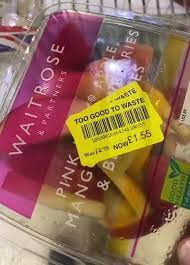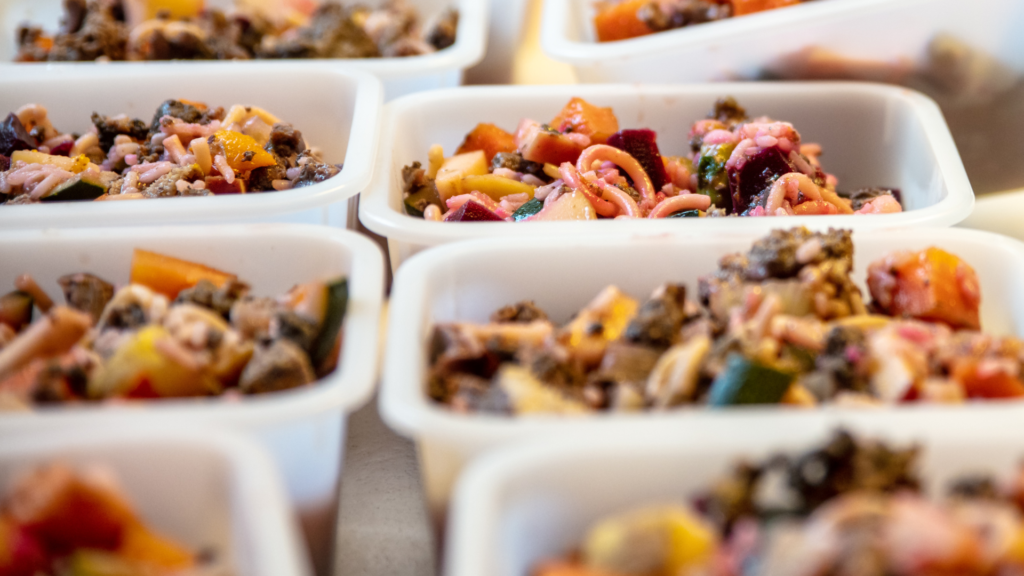The term ‘food waste’ is likely to conjure up an image of rotting food – unpleasant, smelly – yuk! The definition of waste is excess, useless or damaged products – rubbish. The term food waste certainly isn’t desirable or appetising.
In the past there were secondhand clothes, hand me downs, cast offs. These terms felt negative, not quite good enough. Yet a lot has changed. Now we talk about pre-loved, vintage, upcycled. The items have not changed, but the way we see them and the value that we place on them has. By viewing them through a different lens these items are now things to be valued and treasured. We are proud of our finds. Proud that we have saved money AND made a more sustainable choice.
So, could the same approach be adopted for food waste?

What happens when we view food that is close to its ‘sell by date’ through a positive lens – eat me now?! Or leftovers not as scraps but as an additional home cooked meal? Misshapen as natural?
Over recent years there has been a lot of focus on sell by dates vs. use by dates vs. best before dates. What does each mean? Do consumers notice? Or understand any difference? Or are we so conditioned to check these dates that we take them as a cut off. If it’s past that date, we shouldn’t eat it?
Some manufacturers are encouraging us to be a little more thoughtful, and to not take these dates as a hard stop. Tropicana juice packaging has a catchy ‘Past my date? Look. Smell. Taste. Don’t Waste’ message on its pack – framing it as ‘Too Good To Go’.
And the supermarkets are starting to shift their language too. In the UK, Waitrose have updated their yellow reduced stickers to say, ‘Too good to waste’. The intention is clear – the food is good and tasty yet including the word ‘waste’ may still have negative associations. Would ‘Eat me now’ be an even better description?

These are simple messages and ones that are good for consumers, brands and the environment. Consumers aren’t throwing away products (and money) unnecessarily; which naturally has a positive impact on how they relate to the brand; and it reduces food waste. Simple!
Some fruits are packaged and sold as ‘Ripe and ready to eat’. This is a very positive message. It indicates that it’s perfect. It will be delicious – and convenient. All those products that are approaching their use by/sell by/best before date are also perfect for eating now – no need to wait! So, can’t supermarkets reframe and use more confident language, so they’re appealing and inviting rather than ‘going off’?
Food is all about flavour, appetite and desirability. Leftovers used to have negative connotations. It suggested frugality. Yet times are changing. The concept of using extra or spare food to create a tasty, home cooked meal to enjoy when you’re under time pressure is something to be celebrated with meal planning and batch cooking being very much on trend. With a little reframing, leftover dinners have become a yummy, creative and filling home cooked lunch. Much more satisfying than a sandwich at your desk!

The term ‘misshapen’ can suffer in the same way. It indicates imperfection. In the UK there are now several companies, and supermarkets, celebrating these excess and ‘imperfect’ products and positively promoting them as ‘ugly’ or ‘wonky’. Yet the need to do so says a lot about shoppers' expectations of how certain foods should look. Can’t we simply see them as natural, flavourful fruit and vegetables?
Unfortunately, the battle against food waste has multiple challenges, It’s not a simple fix. Yet a shift in language would be a start. And positive framing and descriptors could be the first step in turning our trash into treasure.
Challenge assumptions. Talk to Hummingbird Insights

